Tamron SP 24-70 mm f/2.8 VC USD G2
3. Build quality and image stabilization
In the photo below the Tamron 24–70 mm G2 is positioned between the not-stabilized Nikkor AF-S 24–70 mm f/2.8G ED and the Canon EF 35 mm f/2 IS USM.
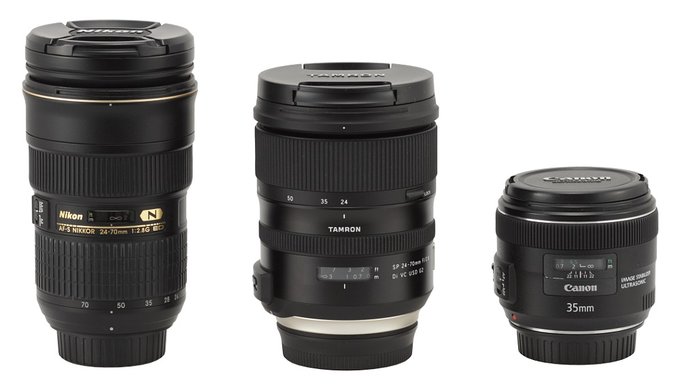 |
Please Support UsIf you enjoy our reviews and articles, and you want us to continue our work please, support our website by donating through PayPal. The funds are going to be used for paying our editorial team, renting servers, and equipping our testing studio; only that way we will be able to continue providing you interesting content for free. |
- - - - - - - - - - - - - - - - - - - - - - - - - - - - - - - - - - - - - - - - - - - - - - - -
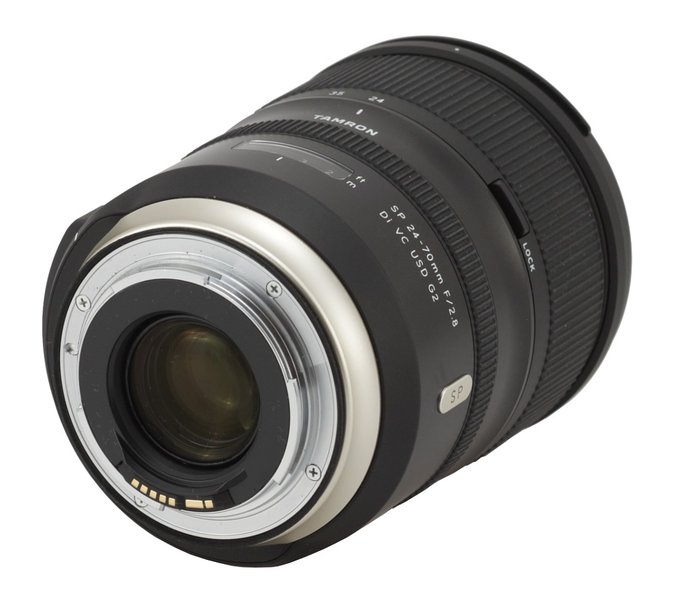 |
On the next ring you can find a window with a distance scale expressed in meters and feet. On its right (looking from above) there is a focusing mode switch (AF/MF) and a stabilization switch (VC ON/OFF). Right next to them you see a big inscription “DESIGNED IN JAPAN” and then, in small text, “MADE IN JAPAN”. A bit further on there is filter diameter marking, that of 82 mm, and, looking in the opposite direction, you encounter an inscription with parameters of the lens.
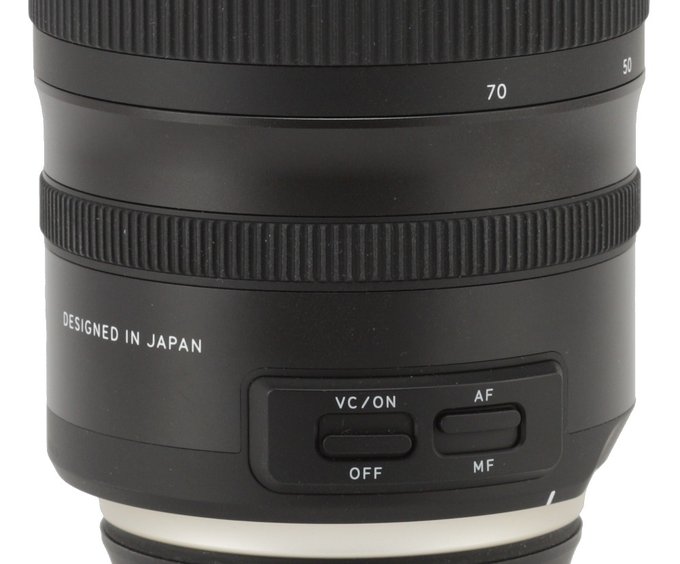 |
Further on, you see a smooth part of the casing made of metal; it doesn’t move and features an inscription ‘Tamron’. It turns into a zoom ring, 31 mm wide, which action is quite smooth and well damped. Most of the surface of that ring is covered by rubber ribbing and below you can find focal length markings at 24, 35, 50 and 70 mm. Next to them there is a LOCK switch used to block the lens at 24 mm. Still we must say that even without that blockade the lens didn’t have any zoom creep tendencies even if shaken or moved vigorously.
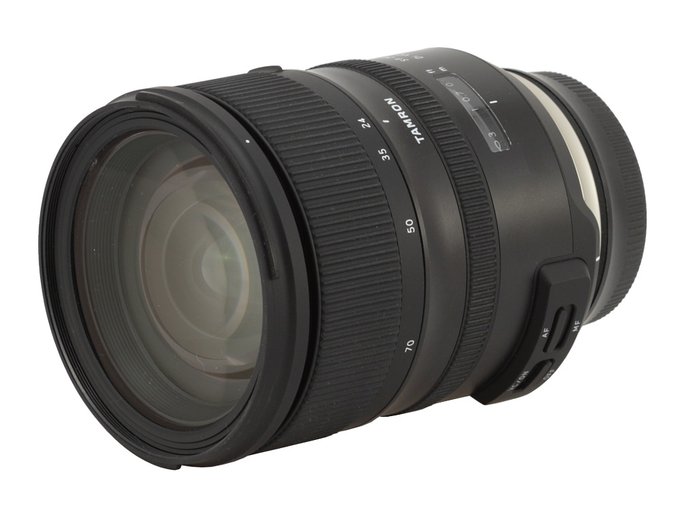 |
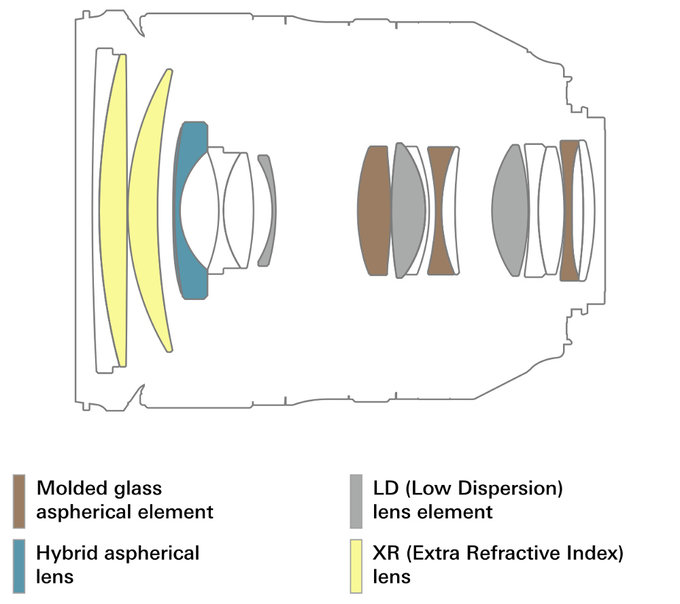 |
Where are the differences? You can find them in coatings – this time Tamron used the eBAND (Extended Bandwidth & Angular-Dependency) and BBAR (Broad-Band Anti-Reflection) coating which is supposed to ensure high transmission results, superior colour reproduction and good performance against bright light.
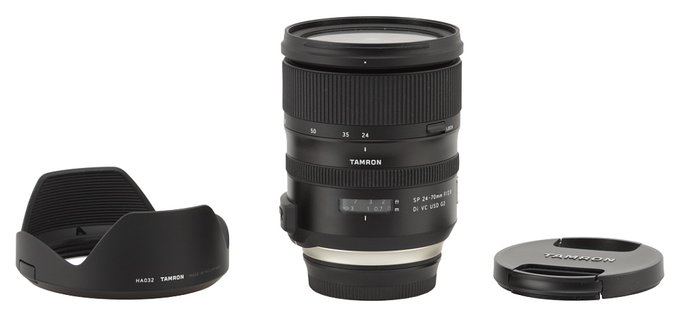 |
Optical stabilization
Tamron boasts of image stabilization as efficient as 5 EV. It is a very high value as most producers declare 4 EV. It is also much higher than 3 EV which we got while testing the predecessor of the lens; small wonder we were very curious how the new lens would fare.In order to check the stabilization efficiency we conducted our test at the 70 mm focal length with the help of the Canon EOS 5D Mk III body. We took several dozen photos with shutter speeds ranging from 1/80 to 0.5 of a second and the stabilization switched on and off. Then we calculated the percentage of blurred photos at every speed and presented the results as exposure time function graph, expressed in EV (with 0 EV being the equivalent of 1/60 of a second) which can be found below.
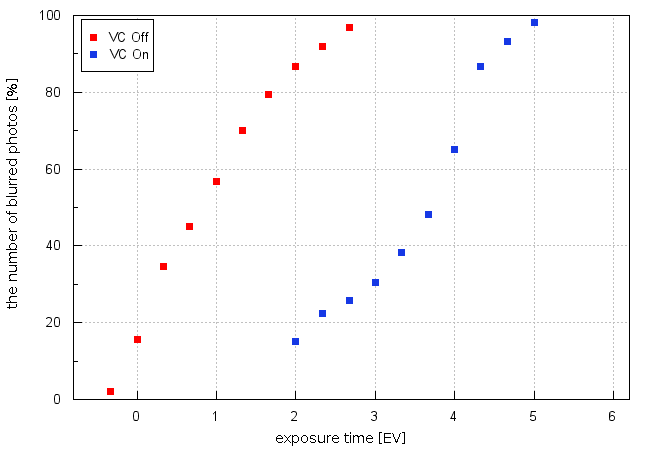
To be honest we are disappointed. The stabilization efficiency once again stays close to 3 EV. Compared to the results of the predecessor, nothing changed. It is really strange; most of producers officially declare the stabilization of their lenses is about 4 EV and often our measurements confirm their claims. In order to beat those results Tamron gives a value of 5 EV whereas in reality the lens achieves just about 3 EV. Such a result wouldn’t be bad at all if not for empty boasting of the producer.






